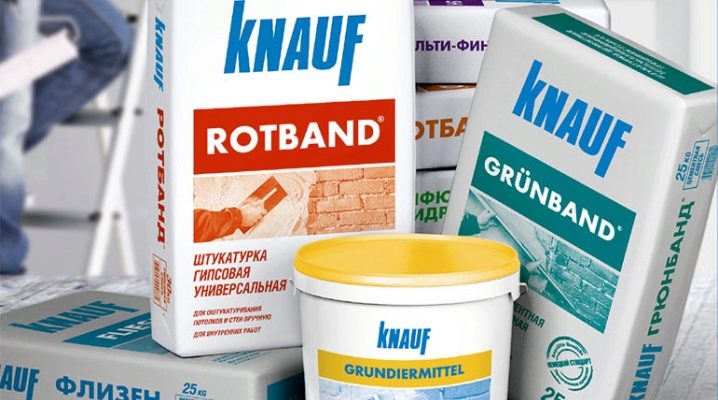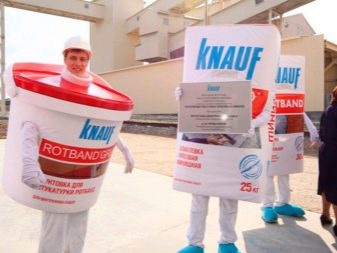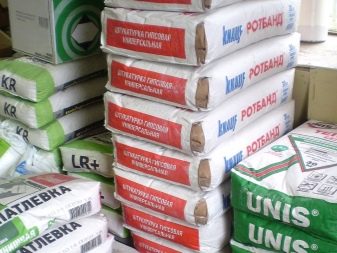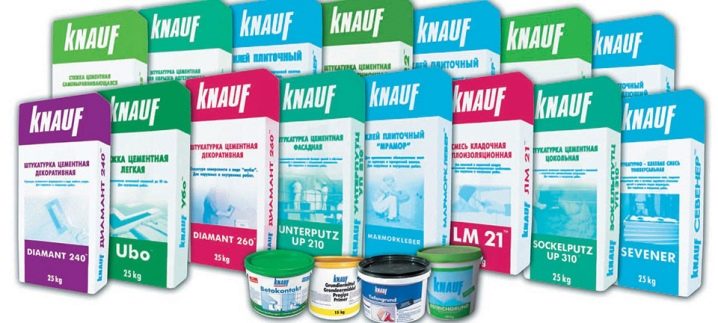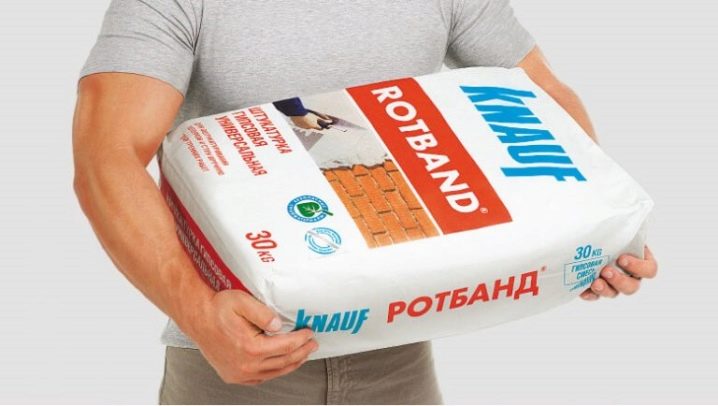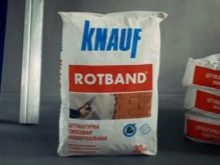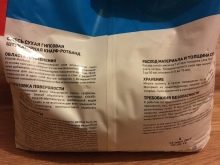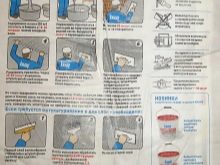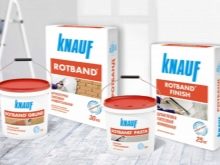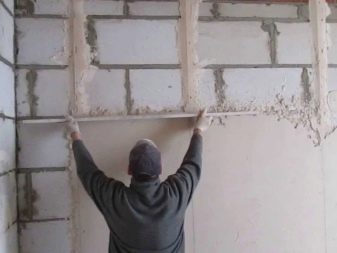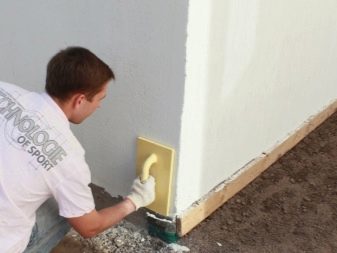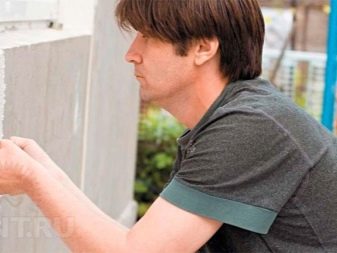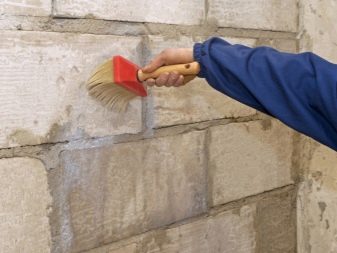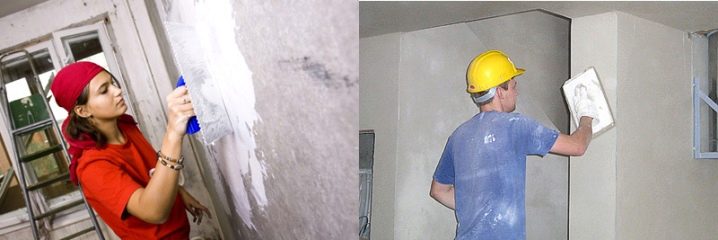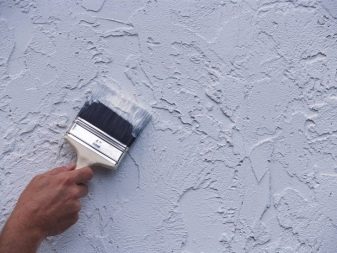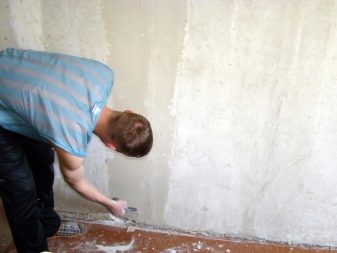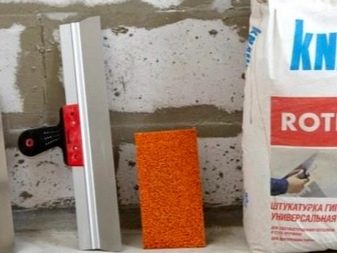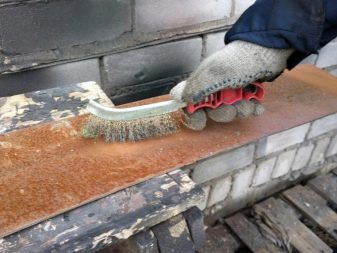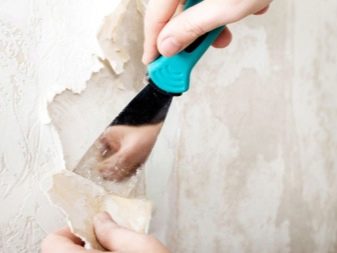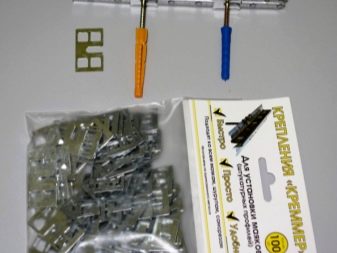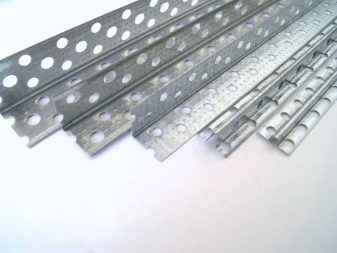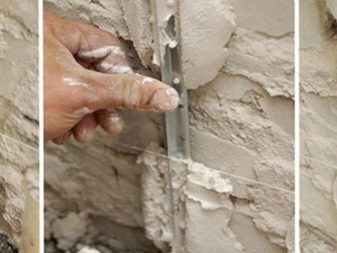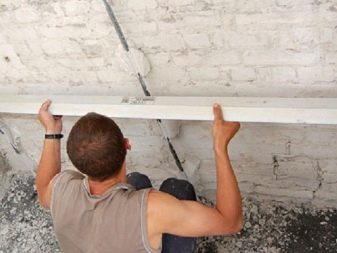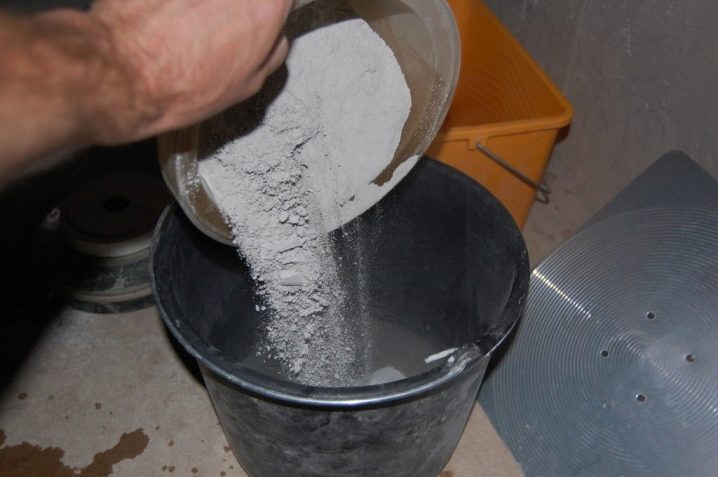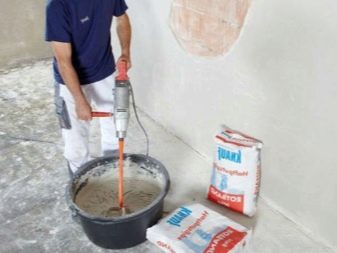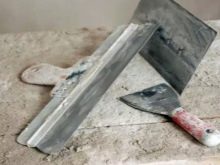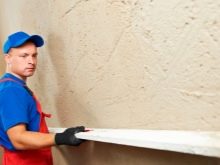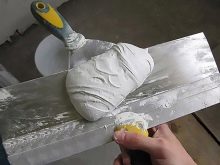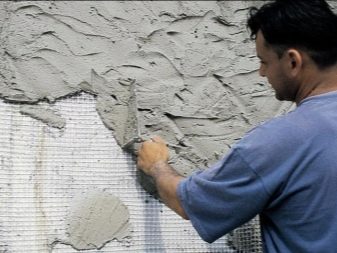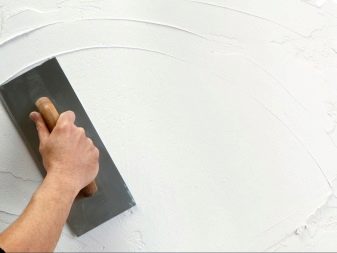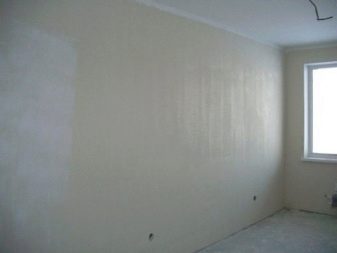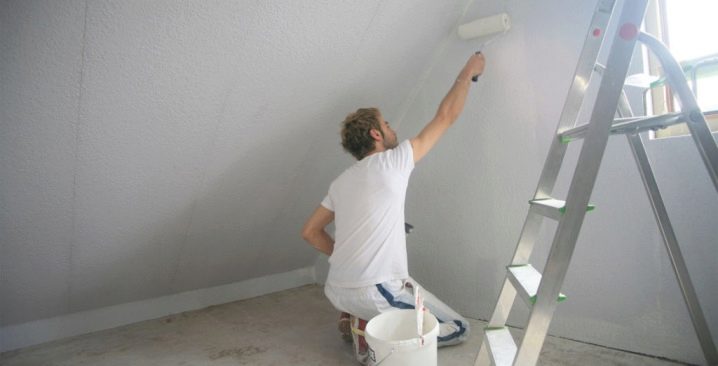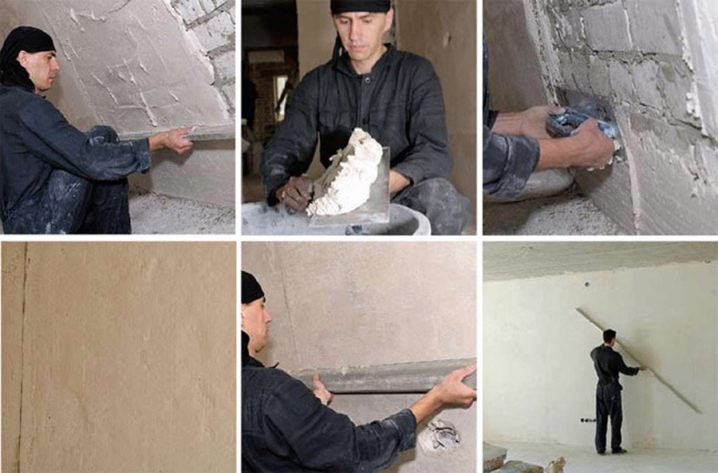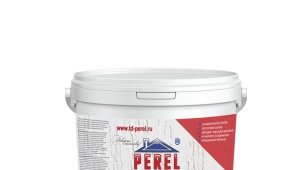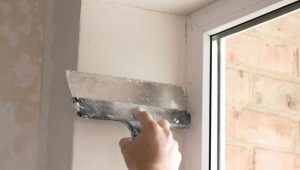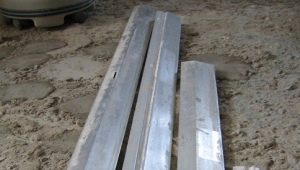Plaster Rotband: instructions for use
When carrying out any repair and finishing works, plastering of surfaces takes an important place. This is done in order to ensure the coating evenness and smoothness. This requires a mixture of lime, sand and cement. One of the most popular in this direction is the gypsum plaster Rotband, which allows you to achieve high quality work done without spending extra effort.
Special features
Rotband plaster is manufactured by the German company Knauf. The basis of its composition is gypsum, mixed with mineral additives. That he is a binder. Before mixing, all components are ground, which increases the contact area and increases the adhesion of the components themselves, as well as the material to the base.
After creation, the produced plaster mix Rotband created a real sensation in the building materials market.Ordinary mixtures were based on cement, while Rotband was made mostly of gypsum. This allowed the composition to be applied in one layer, which was then leveled, and the need for subsequent ones simply disappeared, in contrast to analogs made by other companies.
All products of this company undergo serious laboratory tests, the work is performed by professional specialists on modern equipment, which guarantees high quality of the product, which is necessarily certified and meets all quality standards.
Plaster is ecologically safe, does not contain harmful chemicals and does not represent harm to the health of consumers.
If we talk about the technical characteristics, first of all it should be noted expense. On average, it is about 5 kilograms per square meter with a layer thickness of 10 millimeters. At 30 kilograms of dry composition will need about 20 liters of water. The plaster freezes quite quickly, so it is recommended to use it as much as possible within half an hour.
The maximum thickness of the layer of plaster: applied to the walls - up to 50 millimeters, on the ceiling - up to 15 millimeters.The composition finally sets in about a week, the time for complete solidification depends on the microclimate in the room where the work is done. The strength is 2.5 MPa, the density in solid form is 950 kg / m3. The composition is packaged in packages weighing 5, 10, 25 and 30 kilograms, which is convenient for the consumer. In the closed packages stored 6 months.
A feature of this type of plaster mixture is that it is absolutely universal and does not require further processing, creating a flat surface. Unlike cement-based formulations, it dries not a month, but only 7 days. The mixture is capable of passing air, which helps to get rid of dampness in the room, eliminates the appearance of fungus and mold. In addition, it has water retention properties, which saves the finished material from the appearance of cracks and delamination.
Experts note that it is up to professionals and beginners to work with the plaster mixture of this brand.
On the package is a detailed instruction, following which you can carry out work efficiently, competently and without errors. In addition, using the composition it is possible to decorate the surface and experiment with the design.
Rotband plaster has excellent consumer reviews, but there are some nuances in its use. First of all, the product is in the middle price category, which means that much cheaper materials are on the market. In addition, in case of violation of the use of technology composition may give a slight shrinkage during drying.
Scope of application
Rotband plaster mixes are fairly widespread. They can be used to work with a large number of surfaces made of concrete, aerated concrete, cement, drywall and others. Suitable for masonry applications. Materials are used exclusively for interior decoration, external work is recommended to be carried out using facade plasters, which are also available from the manufacturing company.
There are three main functions of the composition:
- decorative helps in creating aesthetic appearance;
- protective protects the room from moisture overload and maintains a comfortable temperature there;
- the technical function is responsible for preparing the surface for the subsequent application of decorative coatings and materials.
After the plaster dries, you can glue the wallpaper on a flat surface or apply paint and varnish compositions.
Consumption per 1 m2
Before purchasing a mixture, it is necessary to make the most accurate calculation of its consumption. If the plaster mixture is applied in a layer of 1 cm, its consumption should be approximately 8 to 10 kilograms per square meter. With a given thickness of the packaging layer weighing 30 kilograms should be enough for about 3 square meters.
It must be borne in mind that before working the surface must be pre-treated, degreased, remove dirt and serious irregularities. This will help to withstand the consumption of the mixture within the stated limits and will not lead to its excessive use. Application of primer is mandatory. After treatment with a primer, drying is necessary for 12 hours.
If the mixture is applied with a layer of 1.5 centimeters, the consumption per square meter will grow and will be about 12-15 kilograms. In this situation, to improve the quality of work is recommended to use a plaster grid. With proper preparation of the mixture and compliance with the technology of applying a single layer, it may be enough, and the surface will be ready for wallpapering.Painting is made after the finishing layer of material is laid.
Experts recommend applying the composition with a layer of about 10 millimeters, but this is an optional condition. If necessary, the thickness of the material can be increased to 15 millimeters on the ceilings, and up to 50 on the walls.
In the case when this is not enough, you can apply another layer, but this is done after the first has dried, which then also needs to be primed to increase the adhesion of the materials.
Application details
The first step is to prepare the tools that will be needed for further work. After that, you can do the preparation of the surface that you want to thoroughly clean and degrease, as well as to release from the previous coating in order to avoid the appearance of delamination and cracks. The base must be smooth, with a minimum number of irregularities and defects. Metal bases must be treated with compounds with anti-corrosion effect. The wall will have to be primed, and then dried.
Installation of beacons
One of the most important stages in the preparation of the base is the installation of lighthouses.Beacon profiles are sold in hardware stores. They are 6 and 10 millimeters in size, the latter being considered the most rigid. Beacons should be smooth and not have visual defects.
Lighthouses need to be cut, having decided on their necessary height, and then press into the plaster at a distance of 130-180 centimeters from each other. They are aligned on the same plane, and after that the mixture is distributed in accordance with them.
The gap between the beacons and the wall must be sealed. The number of elements is calculated based on the length of the wall.
Breeding
How to dilute the composition of the Rotband, you can learn from the instructions, which is necessarily located on each package with plaster. In general, the mechanism of action is the same. Packaging weighing 30 kg must be diluted in 18 liters of cool water.
The temperature of the fluid is important, because when it is too hot, the solution will set much faster and you may not have time to break up the lumps, which will adversely affect further work.
It is very important to apply the composition with a decent speed, as it starts to dry out pretty quickly. Experts recommend not to dilute the mixture in large volumes.For the best result of mixing, you can use both a construction mixer and a drill with a special nozzle. The consistency of the plaster should be similar to a thick cream. To improve the quality of the composition after mixing, it should be allowed to brew for 10 minutes, then mix again, and only then proceed to work.
It is recommended to pay attention that in the process of plastering surfaces it is impossible to add components to the composition, it is required to prepare a new solution. The temperature in the rooms where the work is carried out should have a minimum of +5 degrees and should not exceed the mark of +30 degrees.
Drawing
Application should be carried out using a long and wide trowel. The required amount of the mixture is applied in accordance with the beacons. It is necessary to process the surface, moving from the bottom up. Under their weight, plaster can settle, so you should pull it out several times.
If you want to create a relief layer, the construction ridge is used in the work. This layer must be dried, primed, and put again on top of it plaster mixture with the second layer.
If the foundations are made of expanded polystyrene or cement, they require mandatory processing, and plaster should be applied to the reinforcing mesh. It also needs to be installed correctly. This is done with the help of PVA glue or a thin layer of plaster on which the element is glued. The grid should be pressed in and smoothed carefully, then plaster, primed and dried. Next is already applied plaster mix Rotband.
Alignment
When nearly an hour had passed, the composition had become much harder, but did not have time to dry out. During this period, you can begin to level the surface. By means of a lath from metal irregularities are smoothed and surface defects are removed. The pits and grooves are also filled with plaster mixture. On such a layer can be laid tile.
If you need to glue the wallpaper or use paintwork materials, the work does not end there. In this case, you need to wait another 15 minutes, and then rub the plaster with a sponge or special float. This procedure is performed after the layer of plaster is moistened with a small amount of water that is absorbed into it. Then you can stick the wallpaper.
However, if their colors are too light, it is recommended to coat the plaster with a finishing compound. This will not allow the mixture to shine through the canvases.
For painting walls, as well as for finishing with thin wallpaper, the base coat should be perfectly smooth and even. This task is easy to putty. It eliminates the smallest defects and cracks, in addition, the use of this composition helps to improve the adhesion between the base and finishing materials. The use of putty helps to reduce the consumption of glue for wallpaper and paintwork materials, and also can prevent the possible shedding of plaster in the future.
Tips and tricks
The drying time of the plaster mix depends on a number of factors. If it is necessary to accelerate as much as possible, it will be advisable to ensure good ventilation in advance of the room in which the work is carried out. We must not forget that before applying the composition of the surface must be pre-treated with a primer.
Full drying of Rotband plaster takes about a week. If the layer is very thick, and also in the case when there are several of them, the drying time may increase to 14 days.But this time is individual and depends on the microclimate in the room, as well as the external conditions. In any case, the maximum thickness of the layer of plaster should be no more than 5 centimeters.
For work it is impossible to use the polluted tools and capacities which were not exposed to cleaning. After applying each layer of all devices must be washed under running clean water.
As for working conditions, first of all it is necessary to observe temperature conditions. In this case, the temperature in the room where the finishing is carried out should be from +5 to +30 degrees, while the optimum is +25. If this indicator is exceeded, there is a threat that the composition will crack and begin to fall off the surface. If, on the other hand, a lower temperature, the solution will take much longer to dry than it should.
And also an important factor affecting the drying of the surface is the humidity in the room. As you might guess, the larger it is, the more time it will take for the coating to finally dry out.
See the following video for instructions on how to use Rotband plaster.
